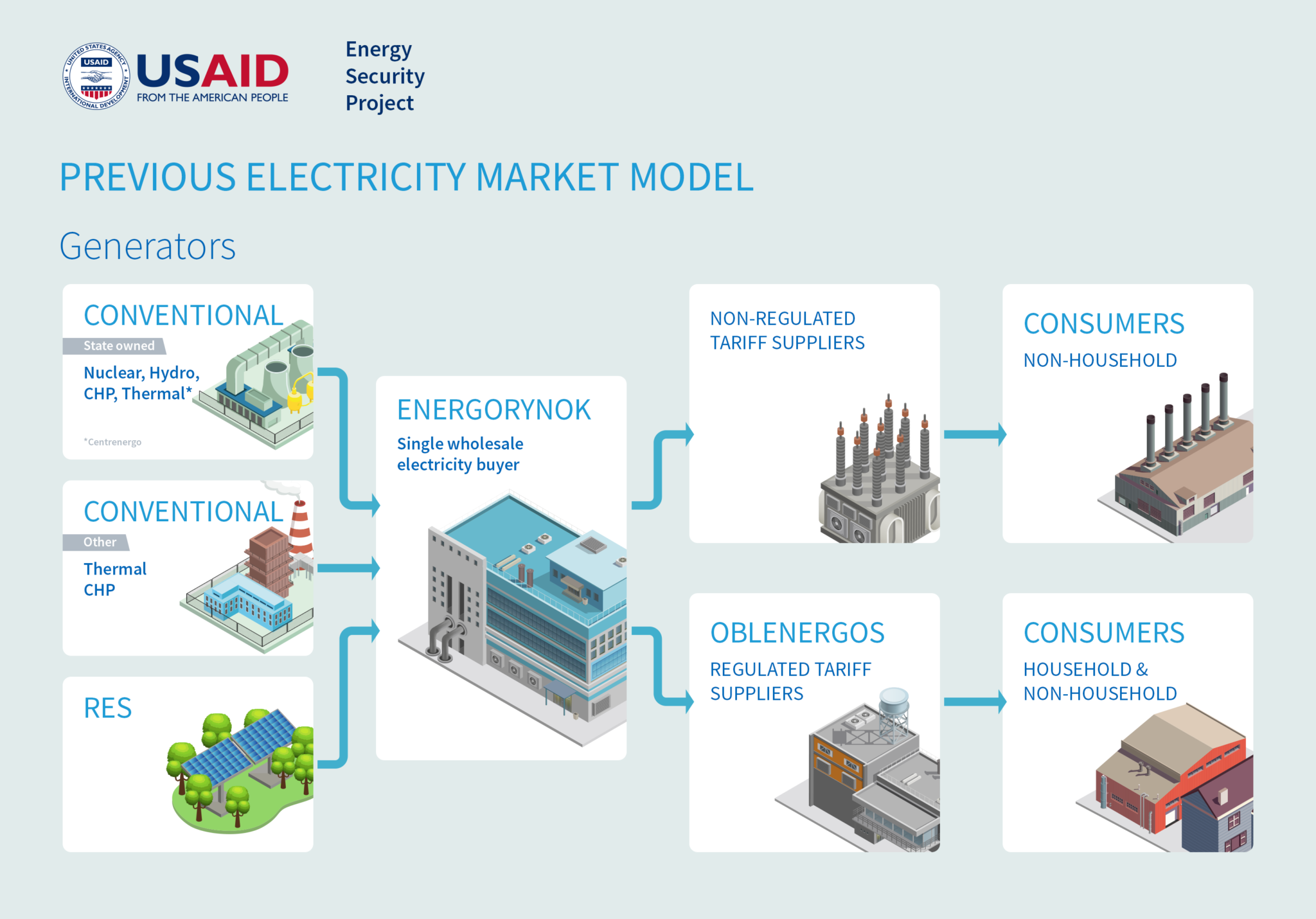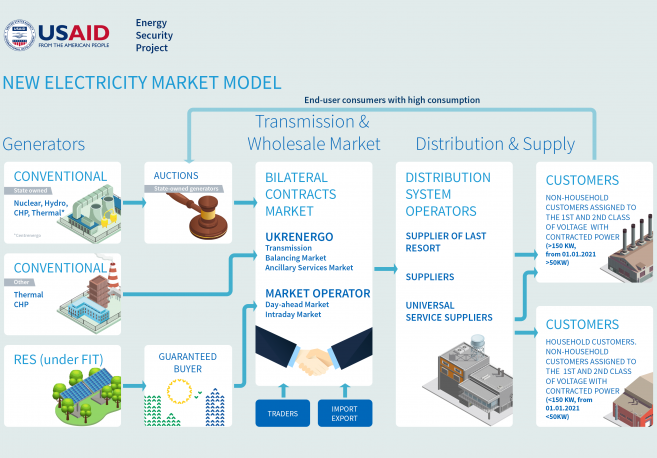Ukraine as a member of the Energy Community has committed to implementing the principles of the European Union (EU) Third Energy Package. This includes unbundling energy generation and supply, increasing electricity market transparency, strengthening consumer protection rules, developing more effective and independent national regulatory authorities, and improving cross-border collaboration and investment.
In 2013, the Ukrainian Parliament moved to liberalize the country’s wholesale electricity market and promote competition. To integrate with the European network, Ukraine started to build competitive retail and wholesale electricity markets. Parliament introduced the Law on the Electricity Market in 2017 to eliminate the single-buyer model and introduce pro-market elements that would promote competition.


On July 1, 2019, Ukraine launched the new Wholesale Electricity Market (WEM). The USAID Energy Security Project (ESP) has supported the effort by providing legislative expertise, helping implement the new law, and facilitating the market’s launch in “safe mode” to prevent sudden price increases.
Under the old single-buyer model, the government set prices throughout the system: from generation to end-users. This created the opportunity for political, investment, and corruption risks, including the abuse of monopoly power. The new model created the grounds for competition development among electricity suppliers and allowed consumers to choose their supplier on a competitive basis.
According to a USAID ESP analysis and based on international experience, the WEM has functioned quite efficiently in its first year of operation, though there’s a lot of work ahead to strengthen its potential. USAID ESP has proposed a WEM roadmap to gradually eliminate market distortions and increase market transparency. This would include implementing the EU Regulation on Wholesale Market Integrity and Transparency (REMIT) for efficient market monitoring and surveillance by regulators, such as establishing a Market Data/Transparency Platform. The next key steps are further development of cross-border capacity auctions with neighboring EU countries and development of market coupling.
